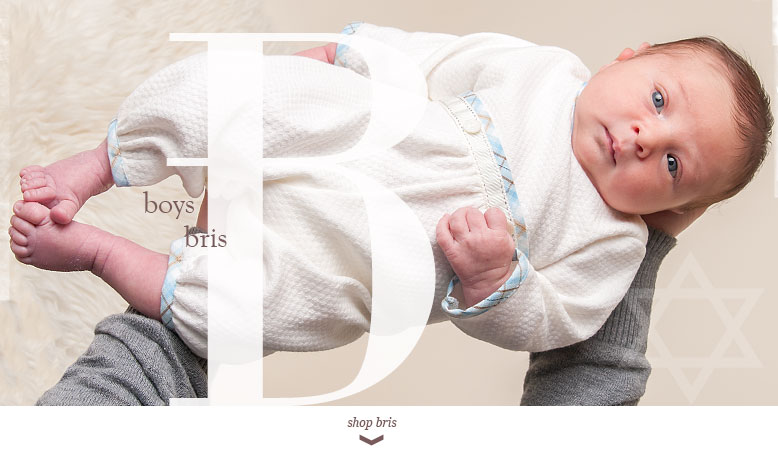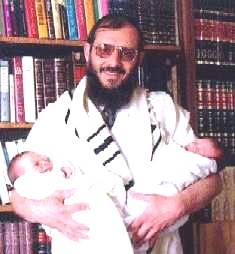by Sam Glaser
 The matrix of the world is built on a system of “sevens.” During lunch today I asked my kids to figure out all the times seven appears in Judaism. We came up with over fifty! And yes, my daughter did check Google at one point. I started thinking about sevens recently at a neighborhood shiva call. Shiva (from the root sheva, or seven) is the week of intense mourning for a loved one and is typically shared by the whole community. Everyone gathers around the mourner for seven days of prayers, bringing them food and offering the solace of company and a listening ear. In this case, my friend Jeff Mann didn’t have much family…the community was his family and we all needed comforting. Another reason that this shiva stood out is that I was going straight from these somber minyans to “sheva brachot” celebrations for a friend’s raucous wedding that I had just played with my band. There’s that number seven again! At a wedding the bride circles the groom seven times and seven blessings are recited under the marital canopy. Then the couple celebrates for seven days with family and friends. During this strange week I danced a schizophrenic ballet from mourning and tears to table-pounding jubilation, nearly every night. Part of the joy and responsibility of living in a Jewish community is sharing lifecycle events, from birth to death. And all have that mysterious number seven at their core.
The matrix of the world is built on a system of “sevens.” During lunch today I asked my kids to figure out all the times seven appears in Judaism. We came up with over fifty! And yes, my daughter did check Google at one point. I started thinking about sevens recently at a neighborhood shiva call. Shiva (from the root sheva, or seven) is the week of intense mourning for a loved one and is typically shared by the whole community. Everyone gathers around the mourner for seven days of prayers, bringing them food and offering the solace of company and a listening ear. In this case, my friend Jeff Mann didn’t have much family…the community was his family and we all needed comforting. Another reason that this shiva stood out is that I was going straight from these somber minyans to “sheva brachot” celebrations for a friend’s raucous wedding that I had just played with my band. There’s that number seven again! At a wedding the bride circles the groom seven times and seven blessings are recited under the marital canopy. Then the couple celebrates for seven days with family and friends. During this strange week I danced a schizophrenic ballet from mourning and tears to table-pounding jubilation, nearly every night. Part of the joy and responsibility of living in a Jewish community is sharing lifecycle events, from birth to death. And all have that mysterious number seven at their core.
Judaism maintains that seven is the number associated with the natural world. Modern physics counts seven basic qualities like length, mass and time that describe all known matter. I recall the acronym ROY G. BIV from grade school science to describe the seven colors of the rainbow. Any musician will concur that there are seven notes in a major scale. Seven planets surround Earth. I find it remarkable that the entire world is anchored to the seven-day week; although some societies have attempted to modify the length of this period we find it stubbornly remaining the universal standard of marking time.
Just beyond seven is the number eight, which for Jews signifies the realm of the supernatural. That’s why we invite our baby boys into the eternal Jewish covenant on the eight day of their lives. That’s why we celebrate the power of Jewish unity and survival in the form of the eight-day holiday of Chanukah. Eight represents “one step beyond.” Science is here to address the realm of seven. Your rabbi is here to help you grapple with eight. Our body is seven, our soul, eight. And Judaism is obsessed with dragging the number eight into the realm of seven; our task is to infuse our day-to-day “meat space” with spiritual intention such that we walk a tightrope between the physical world of seven and the metaphysical realm of eight.
So why would God use seven as the core construct material of the universe? Among our discoveries at lunch today: the first sentence of the Torah has seven words and therein begins the description of the seven days of creation. There are seven commandments associated with Noah, before Judaism upped the ante to 613. The rabbis later codified another seven, like lighting Shabbat candles and making blessings. Noah released the raven and then the dove for seven days each. Our matriarch Leah had seven children. Joseph was freed from prison only after interpreting Pharaoh’s dream of seven fat and skinny ears of corn and cows. Moses appeared on the scene seven generations after Abraham and was born and died on the seventh of Adar. The menorah that he made had seven branches. Joshua had to conquer seven nations in the ancient land of Canaan. We have seven major holidays and two of them last for seven days each. Shavuot (another “sheva” root sighting) is the anniversary of the receiving of Torah and is not given a biblical date but is instead celebrated seven weeks from Pesach. We just entered the “shmittah” year where we let the land go fallow every seven years and count seven of these cycles to get to the Jubilee or Yovel year. Are you seeing a pattern here?
My awareness of this magical number began when I attended Aish HaTorah in Jerusalem for my first time as a wide-eyed twenty-three-year-old traveler. A week into the Jerusalem Fellowships we were given a five day course called Discovery. Our small group journeyed to a mobile home caravan community in the wilderness of the West Bank and our minds were blown with a formative version of this now popular seminar. The bottom line: modern computing has allowed mathematicians to analyze the entire text of the Five Books of Moses as a single string of letters (without the spaces in between.) What did the researchers find? An awe-inspiring system of sevens and forty-nines stretching from one length of the book to the other. One example occurred in the description of the creation of fruit trees in the Garden of Eden. By counting every seven letters starting from that sentence we found the names of the “seven species” that according to tradition flourish in the Land of Israel. We learned about scores of these patterns…just enough information to pry an opening into our secular, science-fed minds that perhaps our Bible might actually have divine origins.
We stand now in Tishrei, the seventh month of the biblical year and by far the most noteworthy and holiday-drenched. It opens with the celebration of Rosh Hashanah, the Jewish New Year, then the day of forgiveness, Yom Kippur, followed immediately by our primary season of joy, seven days of partying called Sukkot. So many holidays that you might as well call in sick for a month. Rather than feel inundated by festive meals and overlong services, hopefully you can relish in the chance to unplug from the daily grind and reprioritize. Think of Tishrei as an annual “shmittah month.” A chance to let our normal routine go “fallow,” to live in the moment and come back to your source.
We remain anchored in God’s original plan for the universe thanks to our weekly commemoration of the seventh day of creation, Shabbat. It’s as if God is saying: “My children, I created the world just for you in seven days and I am still here with you every moment.” Perhaps that’s why God orchestrated both the material and physical realms to continue to operate in this heptagonal matrix. We see a beautiful natural world that on the surface may seem to be operating on its own but in fact the watchful eye of the grand designer winks every time we see that number seven throughout our lives. Shabbat gives us a once-every-seven-days break to ponder the miracle of our universe and give God full credit for our gifts. Engaging in acts of creation on this sacred day quickly erodes the possibility of the establishment of this transformational beachhead of living with simple faith on a weekly basis. I’ll say it again: “more than the Jews have kept Shabbat, Shabbat has kept the Jews.”
Now it makes sense why our lifecycle events seem to gravitate to this number. It’s at these times of transitions that we are most likely to stop and reflect, to perceive the great gifts that God has bestowed upon us. In fact I think that even my ardently agnostic friends can look back at their precious lifecycle events and in their hearts feel the warmth of the smiling, loving face of God. We all can remember attending a meaningful bris on the (seven plus one) eighth day of the child’s life. We recall how as Bar/Bat Mitzvah boys and girls we had to grapple with the seven aliyot of our own birthday’s Torah portion. Then to the chuppah where the beautiful bride surrounds the groom seven times with her innate spiritual essence and protection. Another seven: well-informed couples wait for seven “clean days” each month before engaging in holy relations. And then at the end of life we help to escort the departed to the next realm by comforting their loved ones for seven heartbreaking but intensely meaningful days.
Yes, seven is our lucky number. May we all make the most of this special seventh month, may we readily perceive the presence of God in our lives and be sealed in the Book of Life.
 What did the moel bring to the bris?
What did the moel bring to the bris? Two days later came the fancy bris of the month. All of the neighborhood big shots were assembled and it was anyone’s guess which bearded sage would be graced with the highest honor of sandek, the person who holds the baby in his lap during the ceremony. It was the father’s fourth child but he was as touched as if it were his first. His beautiful wife sobbed as she looked on. Amidst the pomp and circumstance of this first class affair there was still a simple presence of the Shechina and sure enough I found myself getting misty eyed once again. I was still wearing my tallis and tefillin from Shachrit and even though I had prayed in rote fashion, the power of the words I had already uttered somehow landed in my atria at the moment of the incision. One lesson learned: most attendees come for the mitzvah and not the meal. The ample delicacies were artfully displayed in stations across the vaulted lobby of the Museum of Tolerance and yet about 10% was eaten by the time the room cleared out.
Two days later came the fancy bris of the month. All of the neighborhood big shots were assembled and it was anyone’s guess which bearded sage would be graced with the highest honor of sandek, the person who holds the baby in his lap during the ceremony. It was the father’s fourth child but he was as touched as if it were his first. His beautiful wife sobbed as she looked on. Amidst the pomp and circumstance of this first class affair there was still a simple presence of the Shechina and sure enough I found myself getting misty eyed once again. I was still wearing my tallis and tefillin from Shachrit and even though I had prayed in rote fashion, the power of the words I had already uttered somehow landed in my atria at the moment of the incision. One lesson learned: most attendees come for the mitzvah and not the meal. The ample delicacies were artfully displayed in stations across the vaulted lobby of the Museum of Tolerance and yet about 10% was eaten by the time the room cleared out. There is special significance in the fact that we are commanded to carry out this holy procedure on the eighth day. Kabbalah teaches that seven is the number associated with the intersection of the human sphere and the divine. That is why our weekly communion with our Creator and Redeemer, the Sabbath, is every seventh day. Eight is one step beyond, entirely metaphysical, the realm of the supernatural. It is interesting that eight is simply the vertical representation of the universal symbol for infinity. Eight is also the number associated with Chanukah where we celebrate the miraculous victory of the Maccabees and the length of time that the single cruse of oil burned. Some say that the miracle of Chanukah is the fact that we bothered to try to light the menorah or fight the Syrian-Greeks in the first place. After all, isn’t it wiser to surrender when all the chips are down, when defeat is inevitable? NO, says Jewish tradition. That is precisely when we must remember that we are a supernatural people that defies all laws of conventional sociology and, with God’s help, we are invincible.
There is special significance in the fact that we are commanded to carry out this holy procedure on the eighth day. Kabbalah teaches that seven is the number associated with the intersection of the human sphere and the divine. That is why our weekly communion with our Creator and Redeemer, the Sabbath, is every seventh day. Eight is one step beyond, entirely metaphysical, the realm of the supernatural. It is interesting that eight is simply the vertical representation of the universal symbol for infinity. Eight is also the number associated with Chanukah where we celebrate the miraculous victory of the Maccabees and the length of time that the single cruse of oil burned. Some say that the miracle of Chanukah is the fact that we bothered to try to light the menorah or fight the Syrian-Greeks in the first place. After all, isn’t it wiser to surrender when all the chips are down, when defeat is inevitable? NO, says Jewish tradition. That is precisely when we must remember that we are a supernatural people that defies all laws of conventional sociology and, with God’s help, we are invincible.